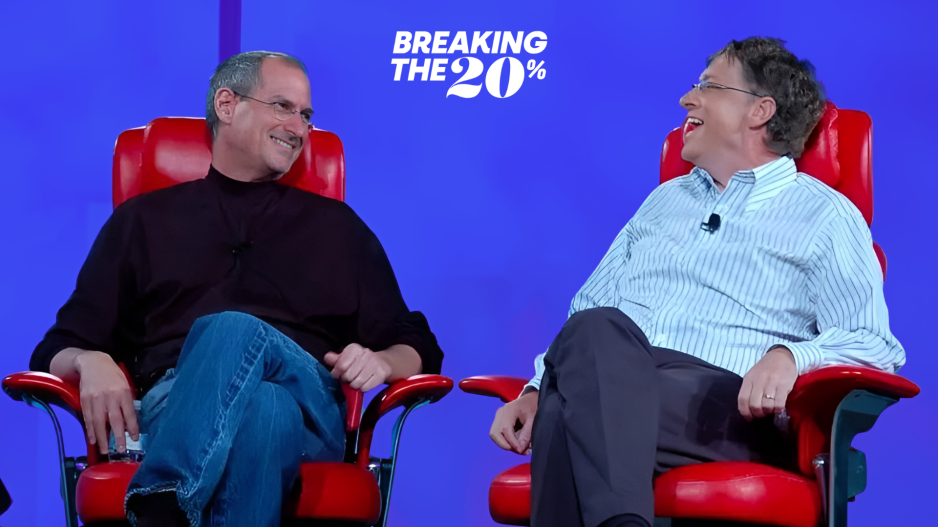Breaking the 20%: Self-Made Billionaires
The story of Bill Gates & Steve Jobs friendship turned rivarly
In this episode of "Breaking the 20%," host Elena Geoorgiou Srouthos and guest Michalis Strouthos delve into the personal computing revolution, focusing on the dynamic histories of Microsoft and Apple, and their iconic founders, Bill Gates and Steve Jobs. They explore the key events and strategies that defined the rise of these tech giants, contextualized through the 1999 TV movie "Pirates of Silicon Valley," which dramatizes the intense rivalry and pivotal moments in the early tech landscape.
The personal computing revolution ignited with the introduction of the Altair 8800 in the mid-1970s. This early personal computer captured the imagination of young tech enthusiasts, including Bill Gates and Paul Allen. Recognizing its potential, they developed a version of the BASIC programming language for the Altair, marking the beginning of Microsoft. This move laid the foundation for Microsoft’s future dominance in the software industry.
A pivotal moment in Microsoft's history was Bill Gates' strategic maneuvering to secure a deal with IBM. IBM sought an operating system for their PCs and initially approached Digital Research, whose CP/M was the leading OS of the time. However, negotiations with Digital Research fell through, opening the door for Gates. Despite not having an operating system ready, Gates and Allen quickly acquired QDOS from Seattle Computer Products, rebranded it as MS-DOS, and licensed it to IBM. Importantly, Gates retained the rights to sell MS-DOS to other manufacturers, a decision that proved to be highly profitable as the IBM PC became the industry standard.
Apple's journey began with the collaboration of Steve Jobs and Steve Wozniak. Their first major success, the Apple II, became a bestseller and established Apple as a significant player in the personal computing industry. The real game-changer, however, was the development of the Macintosh. Introduced with a graphical user interface (GUI) inspired by Xerox PARC, the Macintosh represented a significant leap forward in user-friendly computing and set Apple apart from its competitors.
The rivalry between Bill Gates and Steve Jobs is a defining feature of the personal computing revolution. Gates, known for his pragmatic and strategic approach, contrasted sharply with Jobs, who was celebrated for his visionary and often mercurial leadership. This competitive dynamic drove both companies to innovate rapidly, pushing the boundaries of what personal computers could achieve.
The success stories of Gates, Jobs, and other tech luminaries are often framed as tales of self-made billionaires. However, their achievements were also products of privilege, timing, and key connections. Gates, for example, benefited from early access to computer time and his mother's connections with IBM executives, which were crucial in securing early deals for Microsoft. Similarly, Jobs's ability to attract top talent and secure funding was instrumental in Apple's growth. These factors highlight the importance of context and resources in the success of these tech icons.
The personal computing revolution, epitomized by the rise of Microsoft and Apple, transformed the technological landscape and reshaped the modern world. Understanding the strategic decisions, innovations, and competitive dynamics that fueled this revolution provides valuable insights into the history of technology and the forces that drive innovation.






